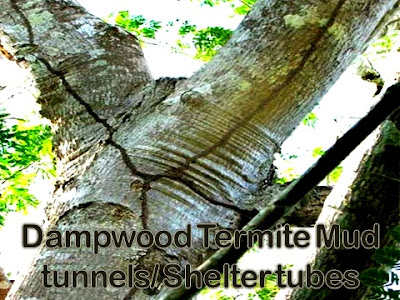TERMITE 101: GUIDES TO THE 3 TYPES OF
TERMITES IN THE PHILIPPINES
In examining a termite, it certainly doesn’t look dangerous or menacing. But the whole termite colony can inflict serious structural damages in the structure or building even in a short period of time.
Termites, known as “silent destroyers” because of their ability to chew through wood, flooring and even wallpaper are undetected. According to the Forest Research Institute based at the University of the Philippines at Los Baňos, once termites penetrate the structure and ignore them, they can cause it 15-17% damage. If continue to ignore them for 7-10 years, the building is already zero value. Each year, termites cause billion of pesos in property damage. In the Philippines, termites continuously search for structures to invade and later damage them 24-7 year round. They look for hospitable habitats. And they swarm during late April to late August to establish new colonies.
There are about 2,800 known termite species worldwide; about 109 species are found in the country which pose threat to local homeowners and building owners. 54 species are very destructive.
According to their characteristics and behavior, termites are classified into three types. These types are:
1). Subterranean Termites or Mound-building termites that include the Rhinotermitidae and Termitidae. This type of termites is found abundantly all throughout the country. Common species include the 1). Philippine Milk Termite [Coptotermes vastator Light], 2). Mound-building Termite [Macrotermes gilvus Hagen], 3). Luzon point headed Termite [Nasutitermes luzonnicus Oshima], and 4) Los Baňos Termite [Macrocerotermes losbanosensis Oshima].
This termite species is the smallest in size and is connected and lives in underground colonies or termite mounds that can contain not less than 2 million members. They build distinctive mud or shelter tubes to gain access to food sources and to protect themselves from open air. This type of termites is the most destructive species in the country.
2). Dampwood Termites or Rotten-wood Termites that include the Hodotermitidae, Kalotermitidae, and Rhinotermitidae. This type of termites infest wood with a relatively high moisture content. They are normally the largest in size than other termite species.
In the Philippines, they do not usually infest structures that have wooden parts that have low moisture content, however, care must be taken to avoid attracting Dampwood termites to a structure.
3). Drywood termites or Powder-post Termites that usually infest very dry wood. They do construct mounds, mud tunnel or shelter tube, and do not require contact with the soil.
This termite type that include Kalotermitidae often establishes nests in roof materials and wooden wall supports and can infest dead wood that may be around homes. Although they don’t require as much moisture for survival as other species, they can also be found in wood near a water source such as a leaky pipe or water heater.















No comments:
Post a Comment